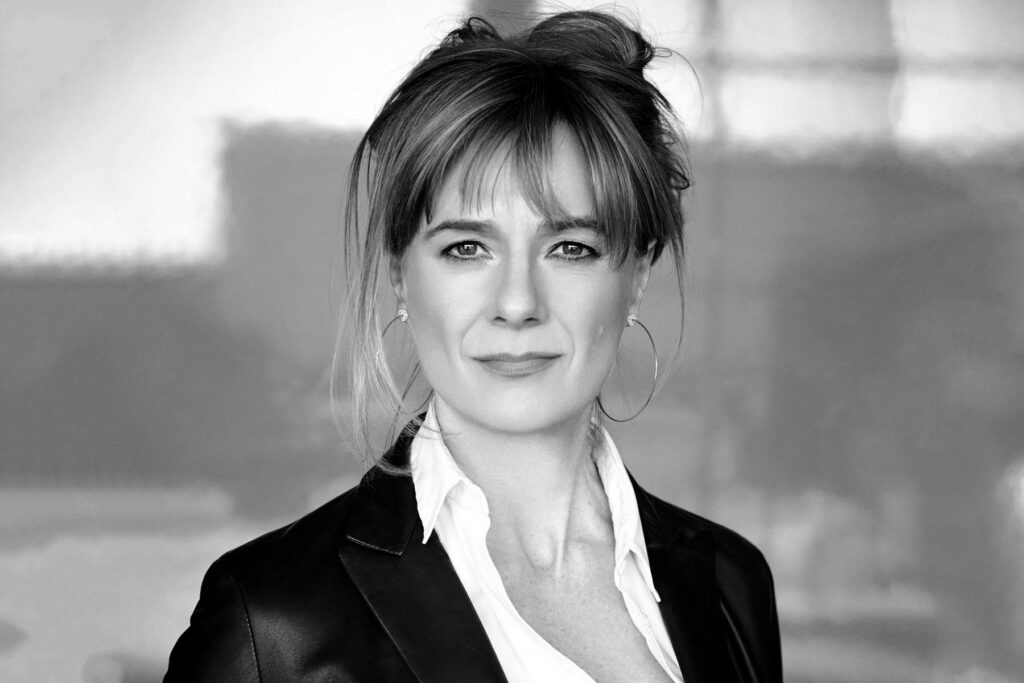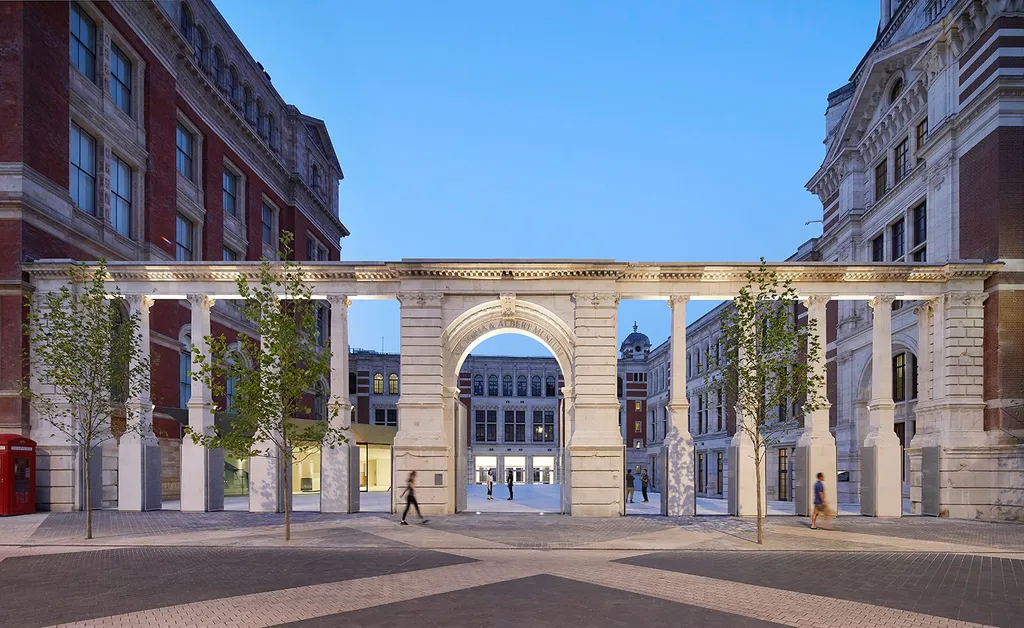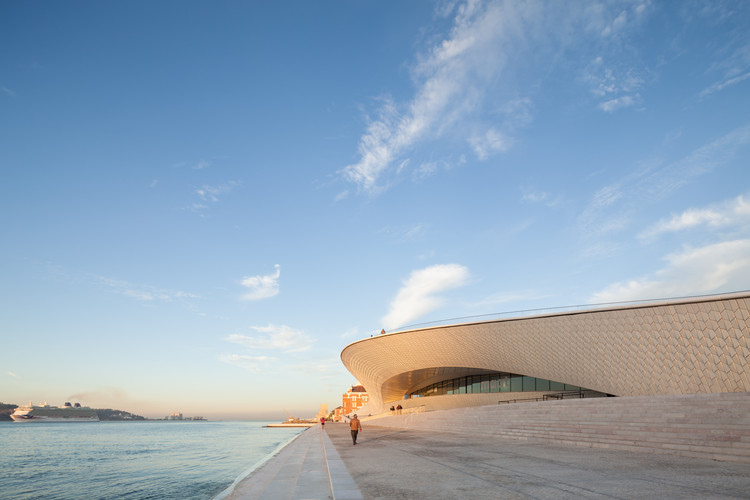Unlock Premium, Members-Only Content
Your source for the most relevant updates in sustainable construction
Introduction to Amanda Levete
Amanda Levete Biography
Amanda Levete is not just an architect; she’s a force of nature in the world of design. Born in 1955, Levete’s journey into architecture began with her studies at the Architectural Association School of Architecture in London. Her career took off when she joined Future Systems, where she made waves with her innovative and forward-thinking designs. In 2009, Levete founded her own firm, AL_A, which has since become synonymous with cutting-edge architectural solutions and sustainability.
Levete’s work spans continents and genres, from high-profile public projects to intimate private commissions. Her designs are characterized by a bold use of materials, fluid forms, and a deep sensitivity to the environment and the human experience. But who exactly is Amanda Levete, and what drives her visionary approach to architecture?

Amanda Levete: Early Career and Education
Amanda Levete’s architectural journey is as fascinating as her designs. She studied at the prestigious Architectural Association School of Architecture in London, where she honed her skills and developed a unique design philosophy. Levete’s early career saw her joining the avant-garde architectural firm Future Systems, co-founded by Jan Kaplický, with whom she later married and collaborated on numerous groundbreaking projects.
Amanda Levete: Founding of AL_A
Establishment of AL_A in 2009
In 2009, Amanda Levete took a bold step and founded AL_A, an international award-winning design and architecture studio. The firm’s ethos is rooted in a combination of intuition and strategic planning, producing designs that are both innovative and contextually sensitive. AL_A quickly gained recognition for its distinct approach and has since completed numerous high-profile projects across the globe.
Key Team Members
AL_A is not just Amanda Levete; it’s a collective of brilliant minds. The firm’s leadership includes:
- Ho-Yin Ng: Director with a keen eye for detail and a background in both architecture and urban design.
- Alice Dietsch: Director known for her creative approach to solving complex architectural challenges.
- Maximiliano Arrocet: Director whose expertise lies in integrating advanced technology with architectural design.
Amanda Levete: Philosophy and Design Approach
Intuitive and Strategic Design
Amanda Levete’s design philosophy is a unique blend of intuition and strategy. She believes in taking the time to deeply understand the context, client, and purpose of each project before making any design moves. This approach ensures that every aspect of her work is thoughtful and purposeful, rather than simply aesthetic.
Key Principles of Levete’s Design Philosophy:
- Understanding the Site and Context: Each project begins with a comprehensive analysis of the site, including its history, culture, and environment.
- Client Collaboration: Engaging clients in the design process to ensure the final product aligns with their vision and needs.
- Material Innovation: Pushing the boundaries of materials to create innovative and sustainable designs.
- Human-Centric Design: Focusing on the user’s experience and interaction with the space.
- Sustainability: Incorporating eco-friendly practices and materials to minimize environmental impact.
Amanda Levete: Collaborative and Innovative Processes
Levete’s firm, AL_A, operates on a model of collaboration. The directors and team members work closely together, fostering a creative and supportive environment. This collective approach ensures that multiple perspectives are considered, leading to more innovative solutions.
List of Collaborative Practices:
- Team Brainstorms: Regular sessions to discuss ideas and challenge each other’s thinking.
- Client Workshops: Involving clients in workshops to gather input and feedback throughout the project.
- Interdisciplinary Collaboration: Working with experts from various fields such as engineering, art, and technology to enrich the design process.
Amanda Levete: Notable Design Techniques
Amanda Levete’s work often features distinctive design techniques that set her apart from her peers. These include:
- Fluid Forms: Creating organic, flowing shapes that harmonize with the surrounding environment.
- Light and Transparency: Utilizing natural light and transparent materials to create bright, open spaces.
- Integration with Nature: Designing buildings that blend seamlessly with their natural surroundings.
Amanda Levete: Major Projects and Achievements
Victoria & Albert Museum Exhibition Road Quarter, London

The Victoria & Albert Museum Exhibition Road Quarter in London is one of AL_A’s most celebrated projects. Completed in 2017, this project involved creating a new entrance, courtyard, and subterranean gallery for the museum.
Key Features:
- Porcelain-Tiled Courtyard: A stunning public space that reflects light and invites visitors to gather and relax.
- Subterranean Gallery: An underground exhibition space that blends seamlessly with the historic museum.
- Innovative Engineering: The project involved complex engineering solutions to integrate the new structures with the existing buildings.
MAAT Lisbon
The Museum of Art, Architecture and Technology (MAAT) in Lisbon, completed in 2016, is another iconic project by Amanda Levete. This museum has become a cultural landmark in the city, known for its innovative design and public engagement.
Key Features:
- Undulating Form: The building’s wave-like structure creates a dynamic interaction with the Tagus River.
- Public Accessibility: The roof of the building is accessible to the public, offering panoramic views of the city and river.
- Sustainable Design: MAAT incorporates sustainable materials and practices, emphasizing Levete’s commitment to eco-friendly architecture.
Impact and Reception
Both the V&A Exhibition Road Quarter and MAAT Lisbon have received widespread acclaim for their innovative designs and contributions to public spaces. These projects highlight Amanda Levete’s ability to blend modern design with historical and cultural contexts, creating spaces that are both functional and inspiring.
Awards and Recognition:
- V&A Exhibition Road Quarter: Won the RIBA National Award in 2018.
- MAAT Lisbon: Recognized with multiple design awards and featured in numerous architectural publications.
By focusing on these two projects, Amanda Levete has solidified her reputation as a leading architect who continuously pushes the boundaries of design and innovation.
Amanda Levete and Innovative Design Elements
Use of Materials and Sustainability
Amanda Levete is renowned for her innovative use of materials, often pushing the boundaries of what’s possible to create striking, sustainable designs. Her work with AL_A frequently incorporates materials that are both cutting-edge and environmentally friendly.
Amanda Levete and Innovative Materials
- Porcelain Tiles: Used extensively in the V&A Museum Exhibition Road Quarter, these tiles not only provide a stunning aesthetic but also reflect light beautifully, enhancing the public space.
- Aluminium Panels: Employed in projects like the Central Embassy in Bangkok, these panels offer a sleek, modern look while being lightweight and durable.
- Etched Glass: Utilized in various projects to create a sense of transparency and openness while maintaining structural integrity.
Amanda Levete Sustainable Practices
Levete’s commitment to sustainability is evident in her thoughtful selection of materials and construction methods. Some of her notable sustainable practices include:
- Energy Efficiency: Designing buildings that maximize natural light and ventilation to reduce energy consumption.
- Recycled Materials: Incorporating recycled and locally sourced materials to minimize the environmental footprint.
- Green Roofs: Implementing green roofs and other biophilic design elements to enhance urban biodiversity and reduce heat island effects.
Amanda Levete: Integration of Technology in Design
Amanda Levete’s designs are not just about aesthetics; they are deeply rooted in technological innovation. She leverages advanced technology to enhance the functionality and sustainability of her buildings.
Technological Innovations
- Building Information Modeling (BIM): Utilized in the design and construction process to improve accuracy and efficiency.
- Advanced Structural Engineering: Collaborating with engineers to create innovative structural solutions that allow for daring architectural forms.
- Smart Building Systems: Integrating smart technologies to optimize building performance and user comfort.
Examples of Technology Integration
- Sky Central, London: This project features cutting-edge technology in its construction and operations, making it one of the most advanced office spaces in the world.
- Eiffel Tower Visitor Experience Redesign, Paris: Incorporates advanced materials and construction techniques to enhance visitor experience and sustainability.
Table of Notable Projects and Technologies
| Project | Innovative Material | Technological Feature |
|---|---|---|
| V&A Museum Exhibition Road Quarter | Porcelain Tiles | Advanced Structural Engineering |
| Central Embassy, Bangkok | Aluminium Panels | Smart Building Systems |
| MAAT Lisbon | Fluid Forms | BIM and Sustainable Design |
Amanda Levete and her Influence on Contemporary Architecture
Contributions to Public Space Design
Amanda Levete’s impact on public space design is profound. Her projects often transform underutilized areas into vibrant, accessible spaces that foster community interaction and cultural engagement.
Key Contributions:
- V&A Museum Exhibition Road Quarter, London: This project reimagined a previously overlooked courtyard into a bustling public space. The porcelain-tiled courtyard serves as both an entrance and a venue for events, blending seamlessly with the historic architecture of the museum.
- MAAT, Lisbon: The museum’s roof doubles as a public park, providing panoramic views of the Tagus River and creating a new public space for Lisbon’s residents and visitors. The design encourages exploration and interaction with the waterfront.
- Central Embassy, Bangkok: This mixed-use development integrates retail, hotel, and public spaces, creating a dynamic urban environment. The building’s terraces and gardens offer respite in the bustling city, promoting a connection with nature.
Amanda Levete: Impact on Younger Architects and Designers
Levete’s work has inspired a new generation of architects and designers. Her innovative use of materials, commitment to sustainability, and collaborative design process serve as a model for emerging professionals.
Long-Term Impact on the Field
Levete’s contributions to architecture extend beyond her individual projects. She has helped shape contemporary architectural practices and standards, particularly in the areas of sustainability and material innovation.
Some Influential Projects:
- Victoria & Albert Museum Exhibition Road Quarter, London
- MAAT, Lisbon
- Central Embassy, Bangkok
- Sky Central, London
- Eiffel Tower Visitor Experience Redesign, Paris.
Amanda Levete Future Projects and Vision
Upcoming Projects
Amanda Levete and AL_A continue to push the boundaries of architecture with several exciting projects in the pipeline. These projects promise to bring new levels of innovation and sustainability to various sectors.
Notable Upcoming Projects:
- Belgrade Philharmonic Concert Hall: This project aims to create a world-class cultural venue in the heart of Belgrade. The design will focus on acoustics, audience experience, and integration with the surrounding urban fabric.
- Monte St Angelo Subway Station, Naples: AL_A’s design for this subway station will enhance the commuter experience with cutting-edge technology and innovative use of space. The project will also include public art installations and green spaces.
- D’Ieteren Headquarters, Brussels: This project involves the reimagination of the headquarters for D’Ieteren, incorporating sustainable design principles and creating a dynamic workspace.
Vision for Future Architectural Trends
Levete’s vision for the future of architecture includes a strong emphasis on sustainability, technology integration, and human-centric design. She believes that architecture should not only be visually striking but also improve the quality of life for its users.
Key Elements of Levete’s Vision:
- Sustainability: Continuing to innovate with eco-friendly materials and energy-efficient designs. Levete envisions buildings that generate their own energy and have minimal environmental impact.
- Technology Integration: Leveraging advanced technologies such as smart building systems, BIM, and AI to enhance the functionality and efficiency of buildings. Levete sees technology as a tool to create more responsive and adaptive environments.
- Human-Centric Design: Focusing on the user experience and creating spaces that promote well-being and social interaction. Levete advocates for designs that are inclusive and accessible to all.
By continuously pushing the boundaries of what’s possible in architecture, Amanda Levete is shaping the future of the field. Her upcoming projects and visionary approach promise to bring new innovations and set new standards for sustainable and human-centric design.
Amanda Levete and her Impact on Sustainable Architecture
Strategies for Sustainability in Design
Amanda Levete is a pioneer in integrating sustainable practices into architectural design. Her commitment to the environment is evident in her approach to materials, energy efficiency, and overall project planning.
Amanda Levete Key Sustainable Strategies:
- Use of Recycled and Eco-Friendly Materials: Levete often incorporates recycled materials into her projects to minimize environmental impact. For example, the V&A Museum Exhibition Road Quarter utilized sustainable porcelain tiles.
- Energy Efficiency: Projects like the MAAT in Lisbon are designed to maximize natural light and ventilation, reducing the need for artificial lighting and air conditioning.
- Green Roofs and Urban Biodiversity: Levete incorporates green roofs and natural landscapes into her designs to enhance urban biodiversity and create green spaces within urban environments. The MAAT’s accessible roof is a prime example.
Examples of Sustainable Projects:

- MAAT, Lisbon: The museum features energy-efficient design and materials, as well as a green roof that is accessible to the public.
- Eiffel Tower Visitor Experience Redesign: This project aims to improve sustainability by enhancing energy efficiency and reducing the environmental footprint of the visitor facilities.
Amanda Levete Case Studies of Eco-Friendly Projects
Levete’s projects serve as case studies in sustainable architecture, demonstrating how innovative design can go hand-in-hand with environmental responsibility.
List of Eco-Friendly Projects:
| Project | Sustainable Features | Impact |
|---|---|---|
| MAAT, Lisbon | Energy-efficient design, green roof | Enhances urban biodiversity, reduces energy consumption |
| Sky Central, London | Smart building systems, sustainable materials | Optimizes building performance, reduces carbon footprint |
| Central Embassy, Bangkok | Integration of natural elements, energy-efficient systems | Promotes connection with nature, minimizes environmental impact |
Personal Reflections and Insights
Levete’s Views on the Role of Architects Today
Amanda Levete often speaks about the evolving role of architects in today’s society. She believes that architects must navigate a complex landscape of economic, social, and environmental challenges to create meaningful and impactful designs.
Key Insights:
- Architectural Competitions: Levete finds value in the intense and creative process of architectural competitions, despite the challenges and uncertainties they present. She views them as opportunities to explore new ideas and push her design limits.
- Role in Society: Levete emphasizes the importance of architects in shaping the built environment and addressing global issues such as climate change and urbanization. She advocates for architects to take a proactive role in these discussions.
Conclusion
Amanda Levete’s career is a testament to the transformative power of architecture. Through her innovative use of materials, commitment to sustainability, and collaborative approach, she has significantly influenced contemporary architecture. Levete’s work with AL_A has not only produced visually stunning and functional buildings but has also set new standards for sustainability and public engagement.
Her contributions to public space design have created vibrant, inclusive environments that foster community interaction and cultural engagement. Levete’s influence extends beyond her projects, inspiring a new generation of architects to pursue innovation and sustainability in their work.
As we look to the future, Amanda Levete’s upcoming projects promise to continue this legacy of excellence. Her visionary approach ensures that her work will remain at the forefront of architectural innovation, making a lasting impact on the built environment and beyond.
Levete’s story is one of passion, dedication, and relentless pursuit of excellence. Her work reminds us of the potential of architecture to not only shape our surroundings but to enhance our lives and communities. Through her leadership at AL_A, Amanda Levete continues to inspire and redefine the possibilities of architecture in the 21st century
If you want o learn about our consultancies in Portuguese language, click here.
Unlock Premium, Members-Only Content
Your source for the most relevant updates in sustainable construction